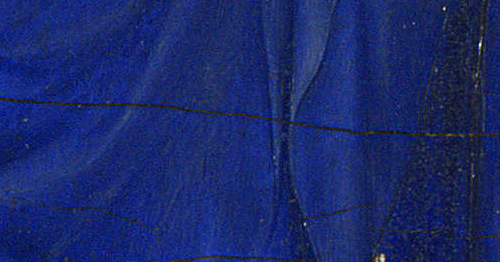#wilton diptych
HISTORY IN COLOR
Ultramarine
RGB: (18, 10, 143)Closest Pantone match: 2746 C
The name Ultramarine comes from the latin ultramarinus, meaning “beyond the sea”. During the 14th and 15th centuries, Ultramarine arrived in Europe through shipments coming from the mines of what is today Afghanistan. These mines produced the deep blue, semiprecious mineral lapis lazuli which was ground into a powder to make Ultramarine.The process was exhaustive, as it yielded only a small quantity of dye, and all but the finest stones produced a drab, washed-out color.
Due to its rare, precious origin and the costs of its production and shipment, the price of Ultramarine in Europe was exorbitant. During the Middle Ages and the Renaissance it was most often used in Christian art, tinting Mary’s robes the color of purity. As it was distributed through Italy, art using Ultramarine is rarer in the northern parts of Europe.
In 1824, the Societé d'Encouragement pour l'Industrie Nationale in France offered a prize to whomever could replicate the hues of Ultramarine through artificial means. The german chemist Christian Gmelin published his method of doing so in 1826, which led to one of the names for artificial Ultramarine being “Gmelin’s color”.
Post link






